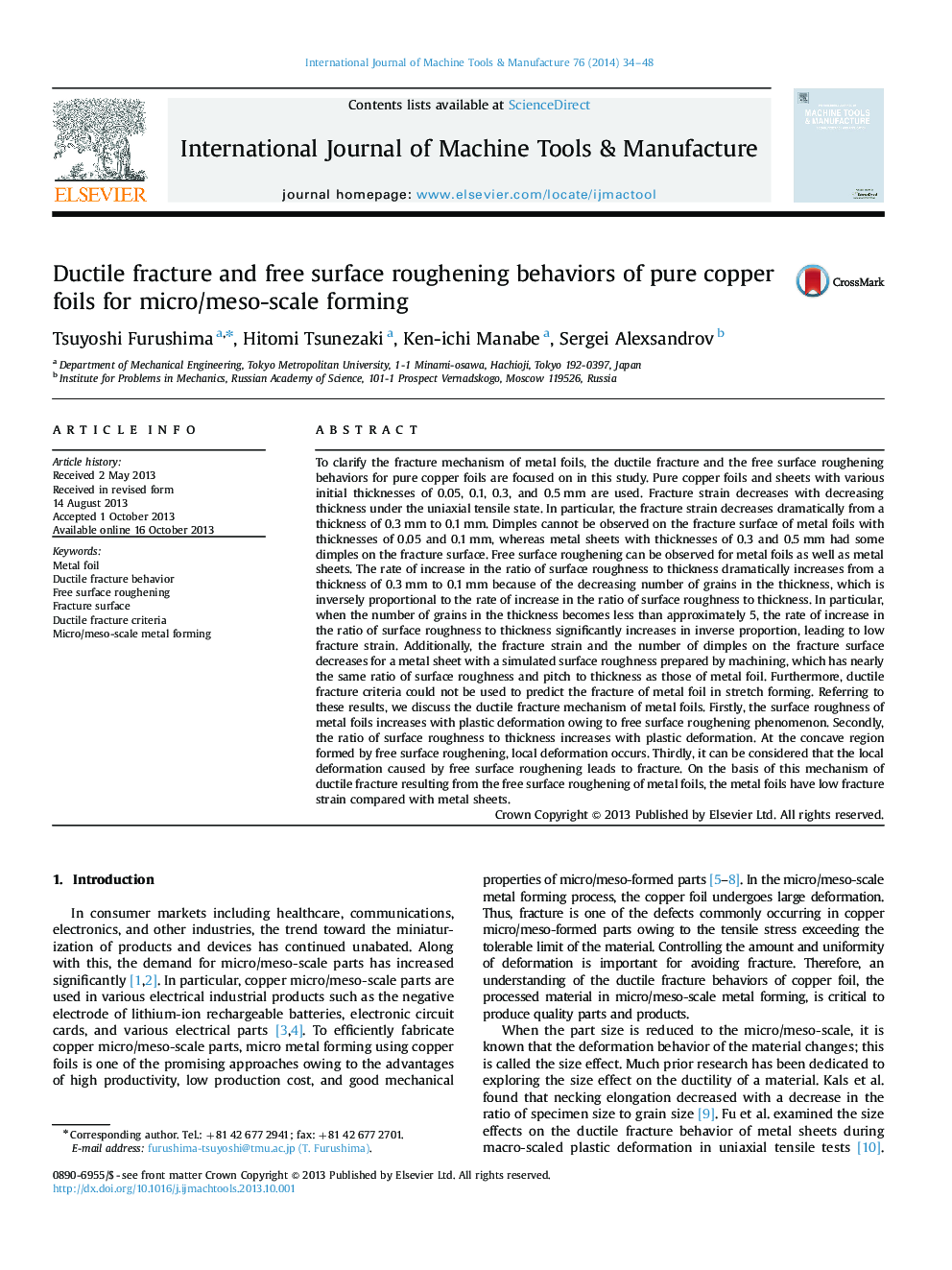| کد مقاله | کد نشریه | سال انتشار | مقاله انگلیسی | نسخه تمام متن |
|---|---|---|---|---|
| 780736 | 1464515 | 2014 | 15 صفحه PDF | دانلود رایگان |

• The fracture strain decreases with a decrease in thickness.
• Dimples on the fracture surface of metal foils cannot be observed.
• Rate of increase in surface roughness to thickness increased with a decrease in thickness.
• Fracture strain and dimples on the fracture surface decreased with simulated surface roughness.
• Ductile fracture criteria could not be used to predict the fracture of metal foil in stretch forming.
To clarify the fracture mechanism of metal foils, the ductile fracture and the free surface roughening behaviors for pure copper foils are focused on in this study. Pure copper foils and sheets with various initial thicknesses of 0.05, 0.1, 0.3, and 0.5 mm are used. Fracture strain decreases with decreasing thickness under the uniaxial tensile state. In particular, the fracture strain decreases dramatically from a thickness of 0.3 mm to 0.1 mm. Dimples cannot be observed on the fracture surface of metal foils with thicknesses of 0.05 and 0.1 mm, whereas metal sheets with thicknesses of 0.3 and 0.5 mm had some dimples on the fracture surface. Free surface roughening can be observed for metal foils as well as metal sheets. The rate of increase in the ratio of surface roughness to thickness dramatically increases from a thickness of 0.3 mm to 0.1 mm because of the decreasing number of grains in the thickness, which is inversely proportional to the rate of increase in the ratio of surface roughness to thickness. In particular, when the number of grains in the thickness becomes less than approximately 5, the rate of increase in the ratio of surface roughness to thickness significantly increases in inverse proportion, leading to low fracture strain. Additionally, the fracture strain and the number of dimples on the fracture surface decreases for a metal sheet with a simulated surface roughness prepared by machining, which has nearly the same ratio of surface roughness and pitch to thickness as those of metal foil. Furthermore, ductile fracture criteria could not be used to predict the fracture of metal foil in stretch forming. Referring to these results, we discuss the ductile fracture mechanism of metal foils. Firstly, the surface roughness of metal foils increases with plastic deformation owing to free surface roughening phenomenon. Secondly, the ratio of surface roughness to thickness increases with plastic deformation. At the concave region formed by free surface roughening, local deformation occurs. Thirdly, it can be considered that the local deformation caused by free surface roughening leads to fracture. On the basis of this mechanism of ductile fracture resulting from the free surface roughening of metal foils, the metal foils have low fracture strain compared with metal sheets.
Journal: International Journal of Machine Tools and Manufacture - Volume 76, January 2014, Pages 34–48